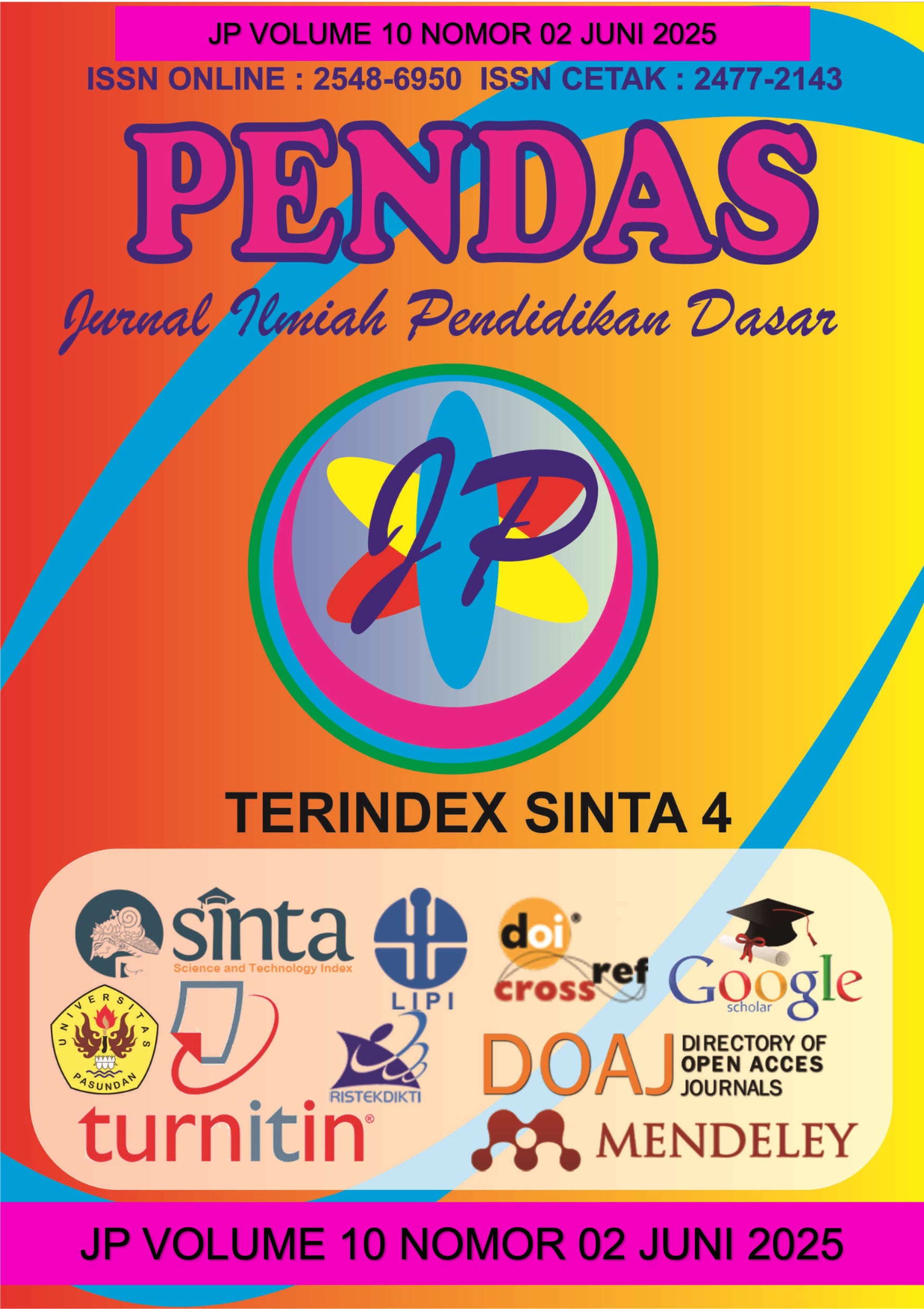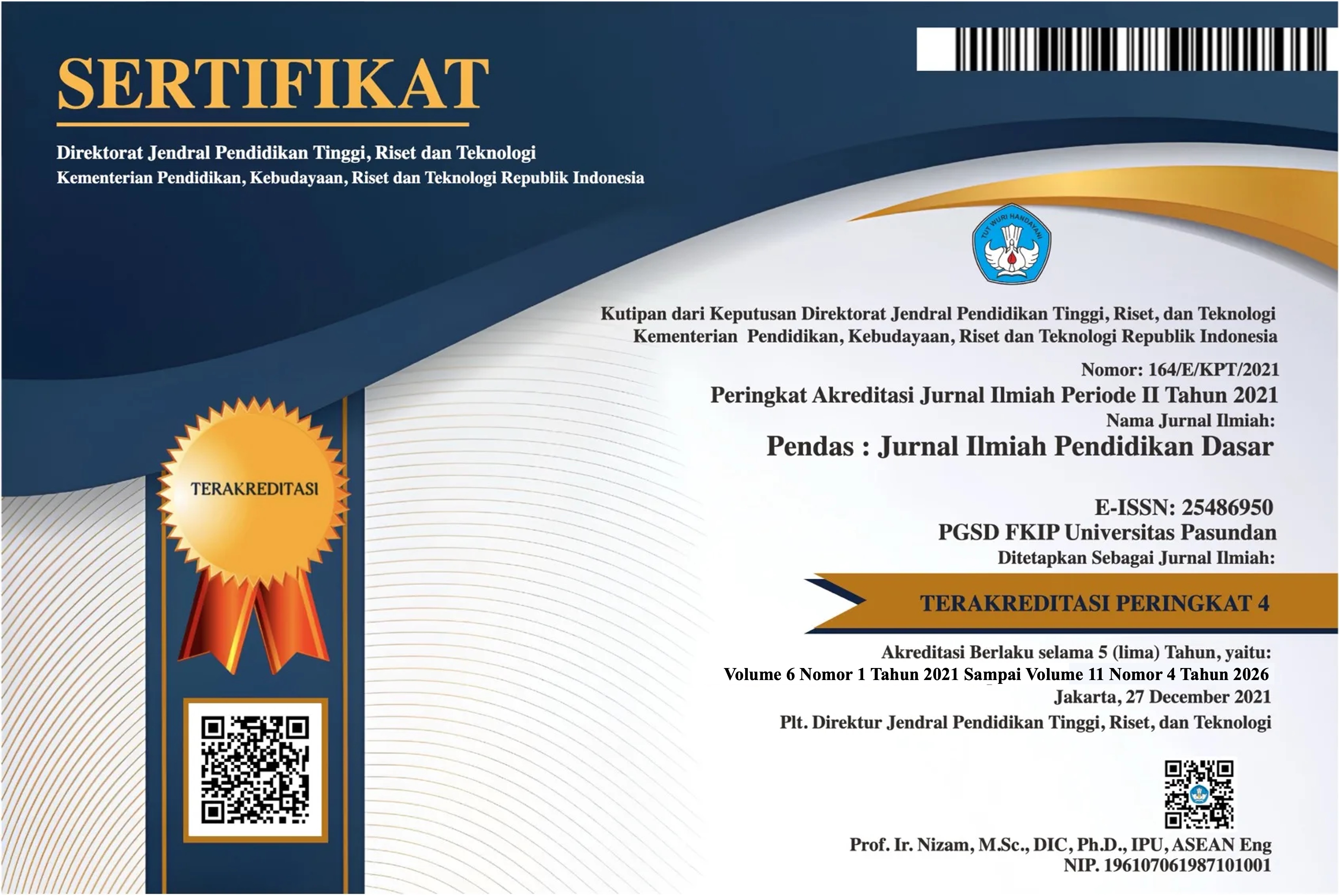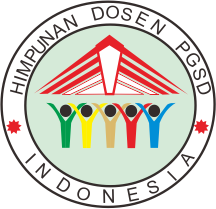KEMAMPUAN MENYELESAIKAN SOAL CERITA MATEMATIKA LITERASI FINANSIAL
DOI:
https://doi.org/10.23969/jp.v10i02.23615Keywords:
ability to solve math story problems, financial literacy.Abstract
This study aims to analyze the effect of the ability to solve math story problems on financial literacy skills in grade IV students at SDN Sedati Gede II. Financial literacy is an important skill needed to understand, manage and make wise financial decisions. The ability to solve math story problems is considered relevant in improving financial literacy because it involves logical thinking, analytical processes, and the application of mathematical concepts in the context of everyday life. This study used a quantitative method with a correlational design. Data were collected through a test of the ability to solve math story problems and a financial literacy test. The research sample was fourth grade students who were selected using cluster sampling technique. Data analysis was carried out using simple linear regression techniques to determine the relationship and influence between the two variables. The results showed that the results of the simple linear regression equation the value of component a (constant) was 39.878 and the value of component b (regression coefficient) was 0.616. In calculating the regression value, the regression equation is obtained: Y = 39.878 + 0.616X (Y = a + bX) there is a significant positive influence between the ability to solve math story problems on financial literacy skills. This indicates that the higher the students' ability to solve math story problems, the better their financial literacy. This study suggests that educators can integrate the concept of financial literacy into mathematics learning, especially through story problems that are relevant to everyday life.
Downloads
References
Afidah, S., Wardhani, I. S. K., William, N., Pratiwi, D. J., & Puspasari, Y. (2023). Pengaruh Metode Bermain Peran Untuk Meningkatkan Literasi Finansial Pada Siswa Kelas V Sdn 1 Tawing. TANGGAP : Jurnal Riset Dan Inovasi Pendidikan Dasar, 3(2), 86–93. https://doi.org/10.55933/tjripd.v3i2.593
Fitriatien, S. R., Ibut Priono Leksono, & Prayogo, P. (2021). Pengaruh Model Pembelajaran Connected Mathematics Project (Cmp) Terhadap Kemampuan Pemecahan Masalah Matematis Siswa Smp. Proximal: Jurnal Penelitian Matematika Dan Pendidikan Matematika, 4(2), 48–55. https://doi.org/10.30605/proximal.v4i2.1243
Kemendikbudristek. (2023). Literasi Membaca, Peringkat Indonesia di PISA 2022. Laporan Pisa Kemendikbudristek, 1–25.
Kementerian Pendidikan dan Kebudayaan. (2017). Materi Pendukung Literasi Finansial. Gerakan Literasi Nasional, 1–41. https://repositori.kemdikbud.go.id/11633/1/cover-materi-pendukung-literasi-finansial-gabung.pdf
Kristianti, I. P., & Kristiana, D. R. (2023). Analisa Literasi Finansial, Sikap Finansial, dan Perilaku Finansial pada Milenial dan Generasi Z. Journal of Culture Accounting and Auditing, 2(2), 12. https://doi.org/10.30587/jcaa.v2i2.6865
Laila, V., Hadi, S., & Subanji, S. (2019). Pelaksanaan Pendidikan Literasi Finansial pada Siswa Sekolah Dasar. Jurnal Pendidikan: Teori, Penelitian, Dan Pengembangan, 4(11), 1491. https://doi.org/10.17977/jptpp.v4i11.13016
Lestari, S. I., Fiantika, F. R., & Rusminati, S. H. (2024). Analisis Kemampuan Representasi Siswa Dalam Menyelesaikan Soal Cerita Pecahan Ditinjau Dari Kemampuan Metematika Siswa Kelas IV SD. Jurnal Ilmiah Wahana Pendidikan, 24(7), 28–42.
Malanua, M. K., Pomalato, S. W. D., & Damayanti, T. (2024). Kemampuan Literasi Matematika Siswa dalam Menyelesaikan Soal Cerita Aljabar Ditinjau dari Self Efficacy Matematika. FIBONACCI: Jurnal Pendidikan Matematika Dan Matematika, 10(1), 1–20. https://dx.doi.org/10.24853/fbc.10.1.1-20
Maulana, R. W., & Kurniasih, K. (2021). Pengembangan Bahan Ajar Untuk Meningkatkan Kemampuan Literasi Finansial Siswa SD. Jurnal Pedagogik Pendidikan Dasar, 8(2), 116–124. https://doi.org/10.17509/jppd.v8i2.40532
Nurdiana, E., Sarjana, K., Turmuzi, M., & Subarinah, S. (2021). Kemampuan Menyelesaikan Soal Cerita Matematika Ditinjau Dari Gaya Belajar Siswa Kelas VII. Griya Journal of Mathematics Education and Application, 1(2), 202–211. https://doi.org/10.29303/griya.v1i2.34
Rusminati, S. H., & Rosidah, C. T. (2018). Korelasi Penerapan Gerakan Literasi Sekolah (Gls) Dengan Kemampuan Menyelesaikan Soal Cerita Matematika Siswa Di Sdn Kebondalem Mojosari Dan Sdn Ketabang Surabaya. Inventa, 2(2), 97–103. https://doi.org/10.36456/inventa.2.2.a1710
Sugiyono. (2022). METODOLOGI PENELITIAN KUANTITATIF. Alfabeta,cv.
Syahruda, S., Bistari, B., & Halidjah, S. (2022). Kemampuan Siswa Dalam Menyelesaikan Soal Cerita Metematika Ditinjau Dari Kemandirian Belajar Siswa Kelas V Sdit Al-Mumtaz Pontianak. Jurnal Pendidikan Dan Pembelajaran Khatulistiwa (JPPK), 11(3), 1–8. https://doi.org/10.26418/jppk.v11i3.53677
Tunu, D. J. I., Daniel, F., & Gella, N. J. M. (2022). Analisis Kemampuan Menyelesaikan Soal Cerita Matematika Siswa ditinjau dari Gender. Jurnal Cendekia : Jurnal Pendidikan Matematika, 6(2), 1499–1510. https://doi.org/10.31004/cendekia.v6i2.1366
Wiedarti, D. (2020). Desain Induk Gerakan Literasi Sekolah (Edisi 2). In Jurnal Pendidikan Dasar (Vol. 1, Issue 2).
Downloads
Published
Issue
Section
License
Copyright (c) 2025 Pendas : Jurnal Ilmiah Pendidikan Dasar

This work is licensed under a Creative Commons Attribution 4.0 International License.



















